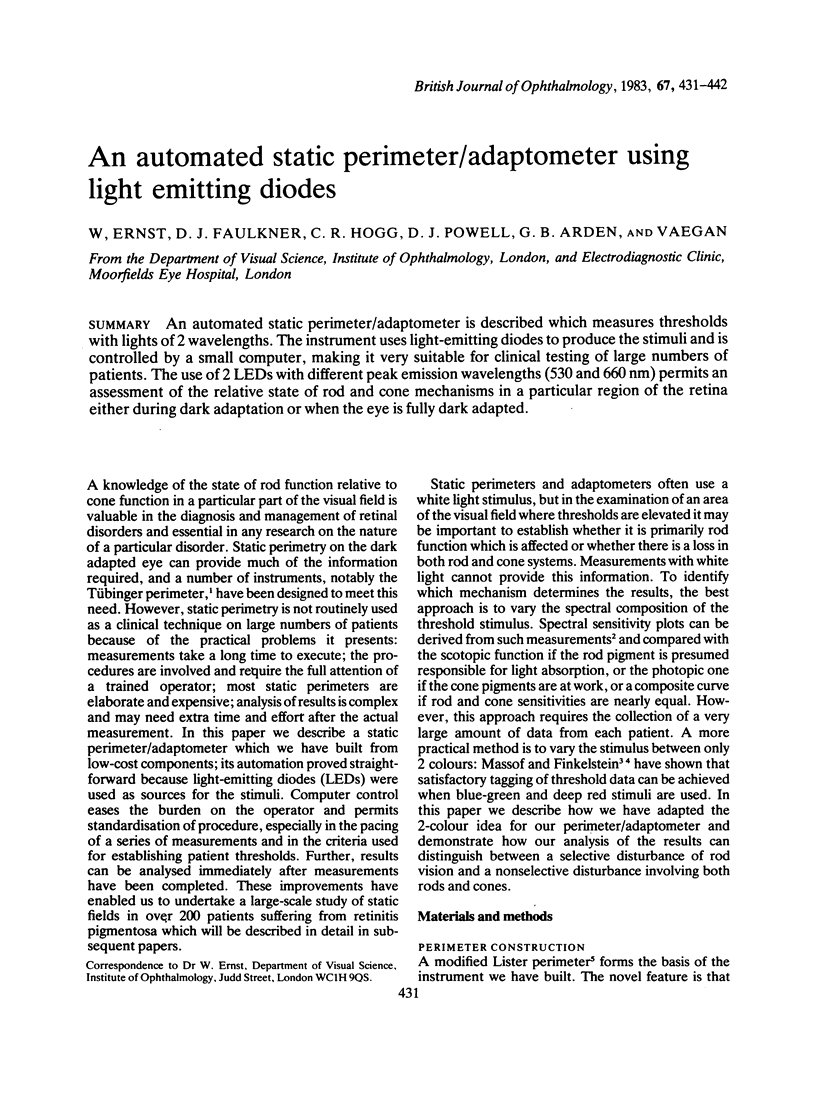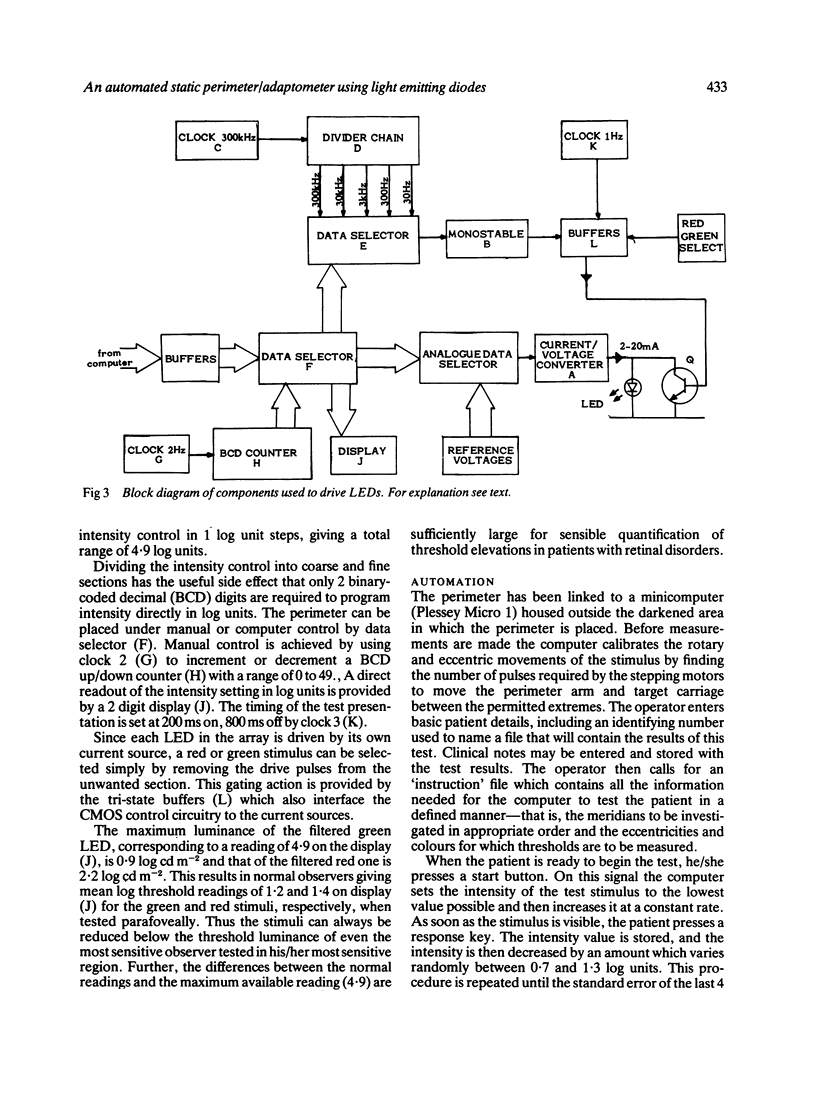Abstract
An automated static perimeter/adaptometer is described which measures thresholds with lights of 2 wavelengths. The instrument uses light-emitting diodes to produce the stimuli and is controlled by a small computer, making it very suitable for clinical testing of large numbers of patients. The use of 2 LEDs with different peak emission wavelengths (530 and 660 nm) permits an assessment of the relative state of rod and cone mechanisms in a particular region of the retina either during dark adaptation or when the eye is fully dark adapted.
Full text
PDF











Selected References
These references are in PubMed. This may not be the complete list of references from this article.
- Massof R. W., Finkelstein D. Rod sensitivity relative to cone sensitivity in retinitis pigmentosa. Invest Ophthalmol Vis Sci. 1979 Mar;18(3):263–272. [PubMed] [Google Scholar]
- Massof R. W., Finkelstein D. Two forms of autosomal dominant primary retinitis pigmentosa. Doc Ophthalmol. 1981 Nov;51(4):289–346. doi: 10.1007/BF00143336. [DOI] [PubMed] [Google Scholar]
- Massof R. W., Johnson M. A., Finkelstein D. Peripheral absolute threshold spectral sensitivity in retinitis pigmentosa. Br J Ophthalmol. 1981 Feb;65(2):112–121. doi: 10.1136/bjo.65.2.112. [DOI] [PMC free article] [PubMed] [Google Scholar]
- WALD G., ZEAVIN B. H. Rod and cone vision in retinitis pigmentosa. Am J Ophthalmol. 1956 Oct;42(4 Pt 2):253–269. doi: 10.1016/0002-9394(56)90377-4. [DOI] [PubMed] [Google Scholar]


